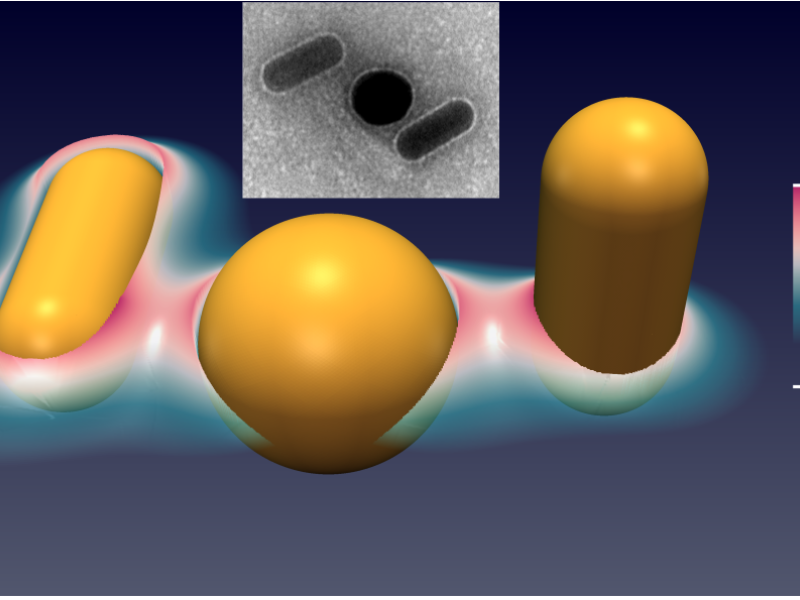Recent results from a collaboration between LMU Munich, Ohio University and ZIB on modeling, simulation and experimental realization of chiral energy transfer on a nanoscale have been published in Nature Communications.
Chirality describes a geometric feature of structures that do not have any internal planar symmetry.
As a consequence, a chiral structure and its mirror image cannot be brought to coincide with each other through the geometrical transformations of rotation and translocation.
Such objects of opposite handedness play a decisive role in nature, as, e.g., a right-handed molecule can have significantly different functions in biological systems as its left-handed counterpart.
Next to molecular identity and function, chirality enables the creation of designer architectures such as chiral metamaterials.
In the collaboration between LMU (group of Tim Liedl), Ohio University (group of Alexander O. Govorov) and ZIB (Computational Nano Optics group), plasmonic chains have been
created experimentally using DNA origami and have been investigated theoretically using advanced numerical modeling and simulation.
Recent results have been published in Nature Communications.
